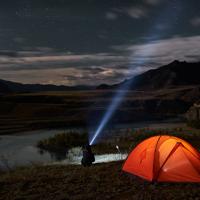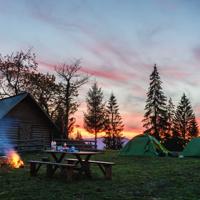Emergency Lighting
Discover essential tips and various lighting options to ensure safety and comfort during power outages and emergencies.
When it comes to emergency preparedness, having access to reliable lighting is a crucial component. Whether you're facing a natural disaster or a simple power outage, the right lighting can provide comfort, safety, and functionality. Here, we explore various emergency lighting options to help you make informed decisions for your home and family.
Why is Emergency Lighting Important?
At its core, emergency lighting ensures visibility when you need it most. Power outages can occur unexpectedly, leaving you in the dark quite literally. This can pose challenges not just for completing everyday tasks, but also for ensuring safety and communication in the house.
It’s worth considering the positioning of your emergency lighting around your home. Hallways, staircases, and main living areas should be a priority to minimize accidents and maximize comfort.
Types of Emergency Lighting
Flashlights
The flashlight is perhaps the most recognized and versatile option in emergency lighting. Today’s market offers a vast array of flashlights, from compact models to substantial lantern-like designs. Each has its merits, and it's worthwhile to own various types for different needs.
When choosing a flashlight, consider:
- LED vs. Incandescent: LED flashlights tend to be more energy-efficient and durable.
- Battery Type: Some models use standard batteries, whereas others incorporate rechargeable options.
- Water-Resistance: In wet conditions, having a water-resistant model can be invaluable.
Lanterns
Lanterns are great for illuminating larger areas, such as a room or campsite. They often offer a broader light range compared to flashlights.
Here are a few options in lanterns:
- Battery-Powered Lanterns: Reliable and straightforward, though it requires regular checks on battery life.
- Solar-Powered Lanterns: Environmentally friendly and cost-effective in the long run, but dependent on sunny conditions for recharging.
- Candle Lanterns: While providing a warm ambiance, these lanterns can pose a fire risk. Always ensure adequate ventilation and supervision if in use.
Headlamps
Headlamps allow for hands-free operation, which is particularly useful when multitasking or working in tight spaces. These come in handy for tasks like fixing a car or organizing your supplies. Again, opting for LED models can result in longer battery life.
Emergency Light Bulbs
Some light bulbs come with built-in backup batteries, allowing them to stay on for several hours after a power outage. Replacing your standard bulbs with emergency light bulbs in common areas can provide immediate light access during an outage.
Glow Sticks
Although not a primary source of light, glow sticks serve as a handy backup. They are lightweight, inexpensive, and have an extensive shelf life. They are especially useful for signaling and marking locations or pathways in a pinch.
Factors to Consider
When curating your emergency lighting arsenal, consider:
- Duration: Know the run-time of your light source. Longer durations are preferable for extended outages.
- Brightness: Lumens indicate the brightness level. Adapt your choice based on usage—higher lumens for larger areas, lower for smaller or personal spaces.
- Ease of Use: In stressful situations, the last thing you want is to fumble with complicated controls.
Personal Experience and Thoughts
In my experience, having a combination of different emergency lighting sources has been beneficial. Each serves its purpose, and together, they can cover a wide spectrum of scenarios. Starting with a reliable flashlight and expanding to other forms as needs dictate may be a good approach.
In Conclusion
While the hope is that you'll never face long periods in darkness, having a well-thought-out collection of emergency lighting options can offer peace of mind. Regularly check and maintain these resources to ensure their reliability.
For further reading, consider FEMA's recommendations on emergency lighting and explore various product reviews for the latest offerings. Always remember, when it comes to preparedness, the small steps taken today can make a significant difference tomorrow.

Explore essential features and recommendations for choosing the right flashlight for survival situations.

Explore the differences between lanterns and flashlights to determine the most effective lighting solution for emergencies.

Explore various solar-powered lighting options that can enhance your preparedness during emergencies.